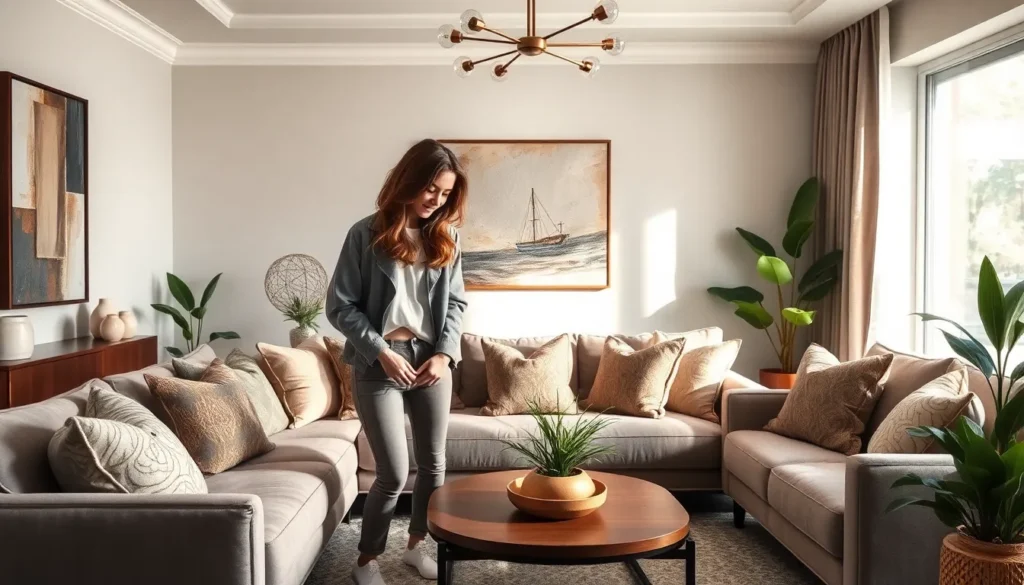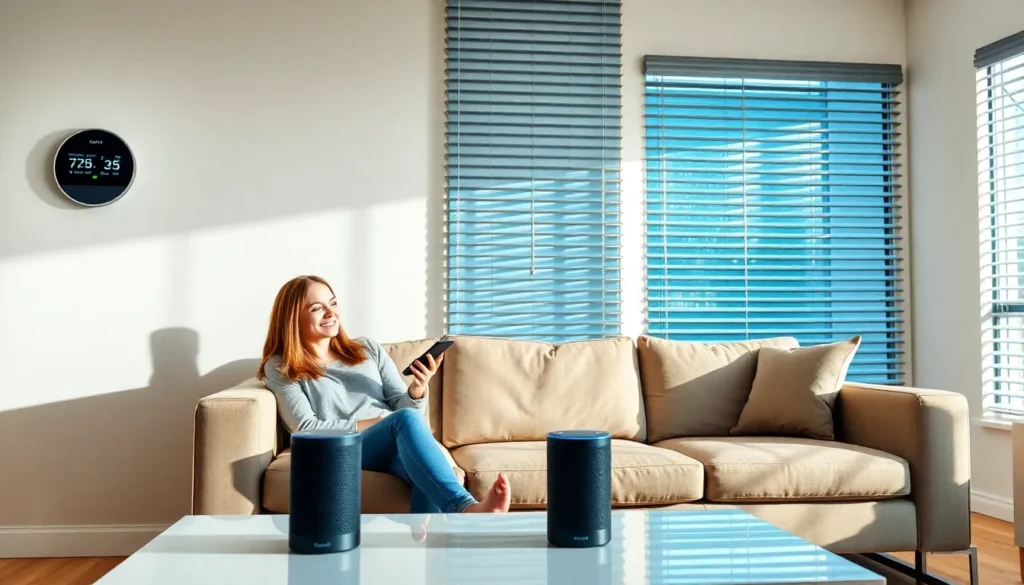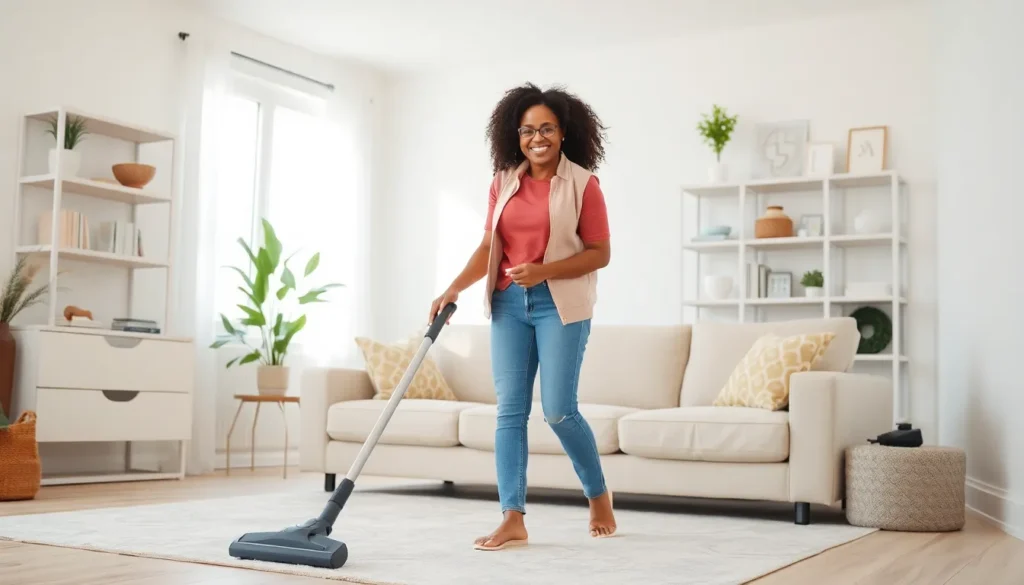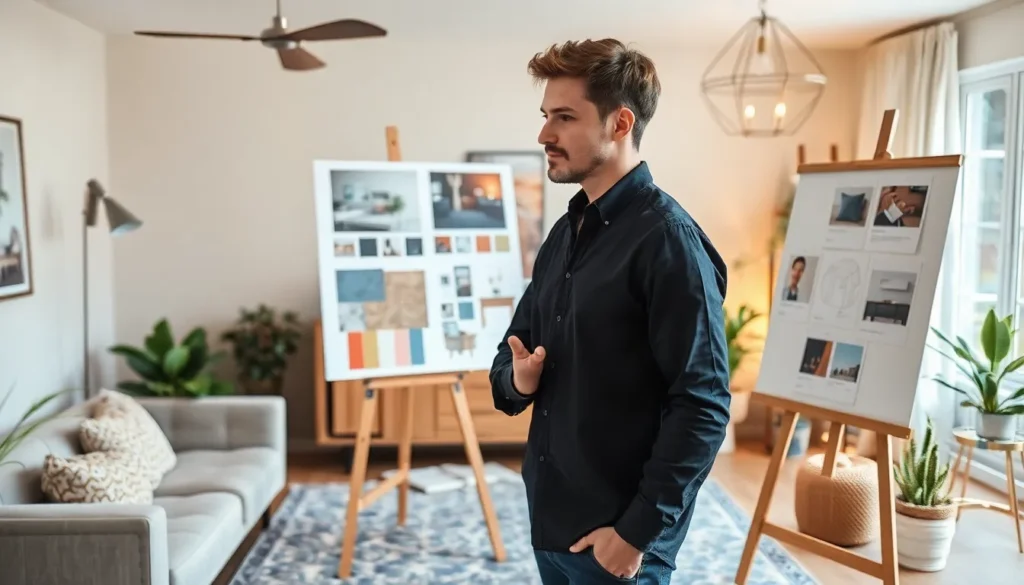Table of Contents
ToggleTransforming a space isn’t just about slapping on a fresh coat of paint or throwing in a trendy rug. It’s an art form that can make even the smallest room feel like a million bucks. Whether it’s a cozy nook or an expansive living area, the right design and decor can turn everyday spaces into extraordinary experiences.
Think of it as creating a masterpiece—one where you’re the artist, the architect, and the interior designer all rolled into one. With a little creativity and a dash of humor, anyone can craft a space that reflects their personality. So grab your paintbrush and let’s dive into the world of design and decor, where every corner can tell a story and every detail can spark joy.
Understanding Design Principles
Effective design principles serve as the foundation for creating cohesive and visually appealing spaces. By grasping these principles, individuals can elevate the ambiance of their homes.
Balance in Design
Balance refers to the distribution of visual weight within a space. Symmetrical balance occurs when elements mirror each other on either side of an axis. Asymmetrical balance provides a more relaxed feel by distributing weight unevenly while still achieving visual stability. Utilizing both types can enhance the aesthetic appeal, whether it’s through furniture arrangement or decorative elements. Weight can also be influenced by color, size, and texture, so careful selection matters. Striking a balance fosters harmony and makes a room feel united.
Color Theory in Decor
Color theory plays a crucial role in evoking emotions and setting the tone of a space. Understanding the color wheel aids in choosing harmonious color combinations. Complementary colors, located opposite each other on the wheel, create vibrant contrasts. Analogous colors, found next to each other, offer a more serene effect. Utilizing neutrals can ground bold colors, providing balance. The mood conveyed by colors also affects perception of space; warm colors tend to energize while cool colors can calm. Thoughtful color choices allow for personalized, impactful decor.
Elements of Decoration
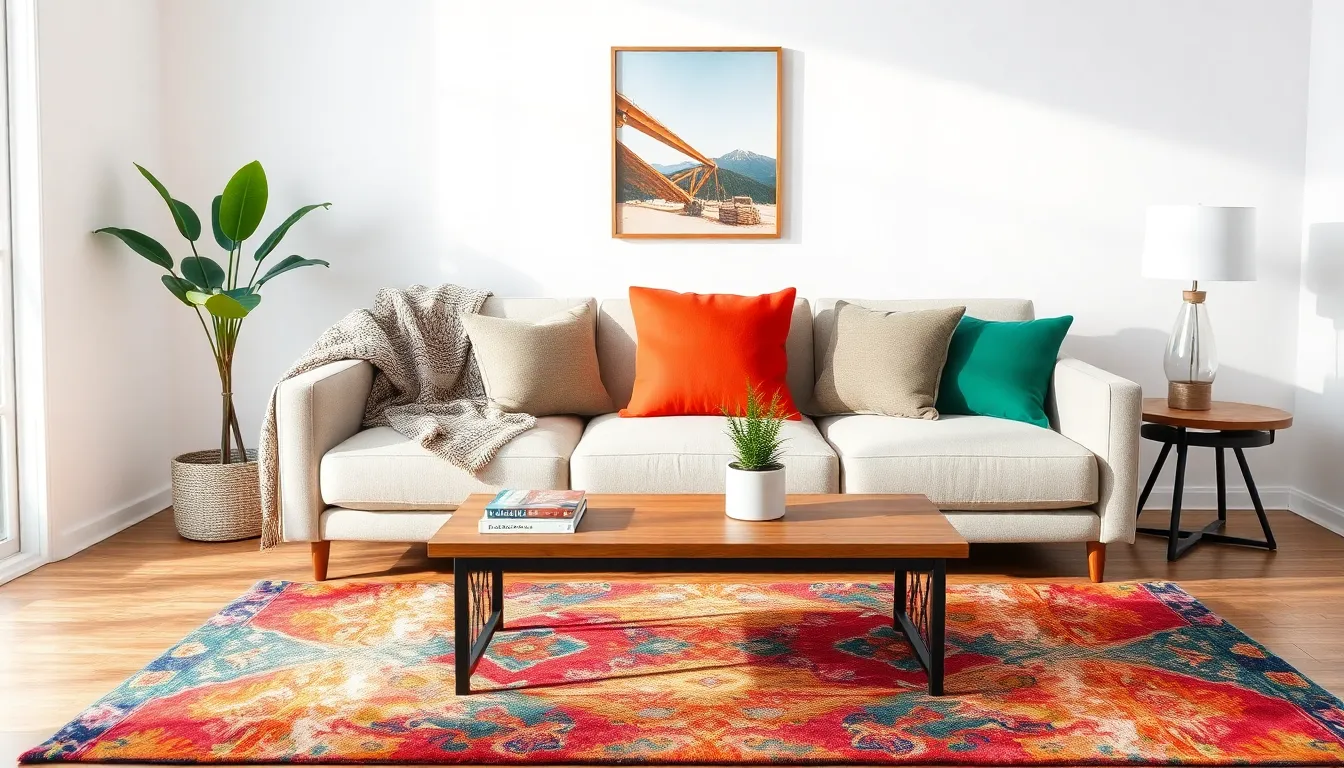
Effective decoration incorporates various components that work together to create a cohesive and inviting space. Understanding these elements enhances the overall design experience.
Furniture Selection
Choosing the right furniture plays a critical role in achieving a well-designed room. Opt for pieces that fit the scale and function of the space. Select versatile furniture that complements overall decor style. Consider functionality alongside aesthetic appeal when making selections. Invest in quality materials for durability and comfort. Prioritize forms that enhance movement and accessibility within the area. Natural finishes can add warmth, while sleek lines provide a modern touch.
Textiles and Patterns
Textiles and patterns bring texture and visual interest to a space. Introduce a mix of fabrics, such as linens, velvets, and cottons, for a layered effect. Use patterns to create focal points and break up solid colors. Floral prints can add freshness, while geometric designs offer modernity. Coordinate colors in textiles with other design elements for harmony. Balance bold patterns with simpler designs to avoid overwhelming the space. Consider the durability of materials, especially in high-traffic areas, to maintain a stylish yet practical decor.
Creating a Cohesive Design
A cohesive design creates a seamless flow throughout a space, enhancing its overall appeal. Using consistent themes and colors ties elements together.
Theme Development
Developing a theme sets the foundation for design coherence. A specific theme creates focus in décor and establishes a recognizable style. Examples include modern minimalism, rustic charm, or bohemian eclectic. Choosing a theme streamlines decisions about colors, textures, and furnishings. Selecting a particular aesthetic creates harmony among different design elements. Establishing a clear theme contributes to a unified expression throughout the space.
Space Optimization
Optimizing space enhances functionality and aesthetics. Smart furniture placement fosters movement and accessibility. Measuring dimensions ensures proportional furniture selection aligned with the room’s scale. Multi-functional pieces maximize utility, such as ottomans that provide storage or tables that can extend for gatherings. Organizing decor assists in maintaining a clean look while minimizing clutter. Strategic use of mirrors can visually expand smaller areas, creating an illusion of openness. Choosing materials that complement the overall design fosters a balanced environment.
Personalizing Your Space
Personalizing a space involves incorporating unique elements that reflect individual preferences and personalities. Each choice contributes to creating an environment that resonates with the inhabitant’s identity.
Incorporating Personal Style
Incorporating personal style significantly enhances a room’s character. Choose colors that invoke positive emotions, such as calming blues or energizing yellows. Select furniture pieces that resonate with personal taste, whether modern or vintage. Layering textures through textiles, such as throws and pillows, adds depth. Add personal touches with family heirlooms or travel souvenirs, making the space more meaningful.
Use of Art and Accessories
Using art and accessories provides an opportunity for self-expression. Display artwork that evokes memories or inspires creativity, such as original pieces or prints from favorite artists. Incorporate decor items like sculptures or vases that reflect personal interests or hobbies. Choose statements like oversized mirrors or unique lighting fixtures that also serve functional purposes. Group accessories in odd numbers to create visually appealing arrangements, ensuring each item contributes to the overall design.
Budgeting for Design and Decor
Budgeting for design and decor ensures that each investment resonates with personal style and functional needs.
Planning and Cost Estimation
Planning begins with defining a clear budget. Allocating specific amounts to various elements of design provides a framework for spending. Consider prioritizing essential items like furniture and paint, as they significantly affect the overall aesthetic. Gathering quotes from suppliers can help refine estimates, ensuring they align with anticipated costs. Tracking expenses diligently aids in understanding where adjustments may be necessary. Utilizing online tools for budgeting offers additional clarity and efficiency in managing project finances. Fostering flexibility in the budget accommodates unforeseen expenses while preserving the vision for the space.
Affordable Decor Ideas
Affordable decor ideas can transform spaces without overspending. Exploring thrift stores often yields unique decor pieces that add character. Repurposing existing items creatively can also deliver fresh looks at low costs. Choosing paint colors carefully can dramatically change a room’s vibe, enhancing its appeal on a budget. Incorporating DIY projects encourages creativity while maintaining cost control. For instance, creating artwork or decorative elements adds a personal touch. Focusing on natural light through strategic window treatments enhances the ambiance, eliminating the need for costly upgrades. Engaging in seasonal decor changes keeps spaces lively without significant financial commitments.
Creating a well-designed and decorated space is a journey of self-expression and creativity. By understanding essential design principles and incorporating personal touches, anyone can transform their environment into a reflection of their unique style. Careful consideration of color, balance, and texture elevates a room’s aesthetic while maintaining functionality.
Budgeting smartly and embracing DIY projects can make this process accessible and enjoyable. With a bit of planning and imagination, it’s possible to craft spaces that not only look beautiful but also evoke positive emotions. Ultimately, the art of design and decor lies in the joy of bringing one’s vision to life, making every room a masterpiece in its own right.

